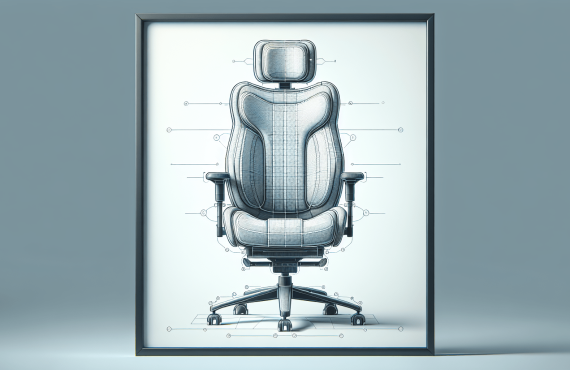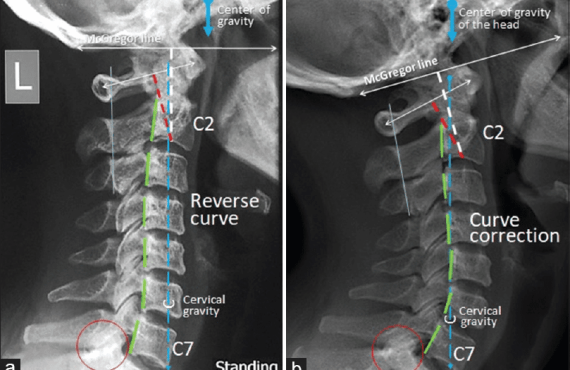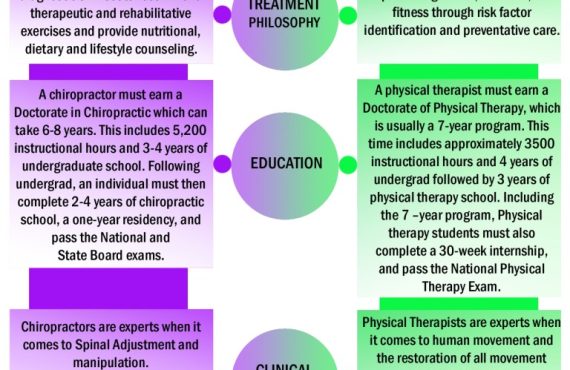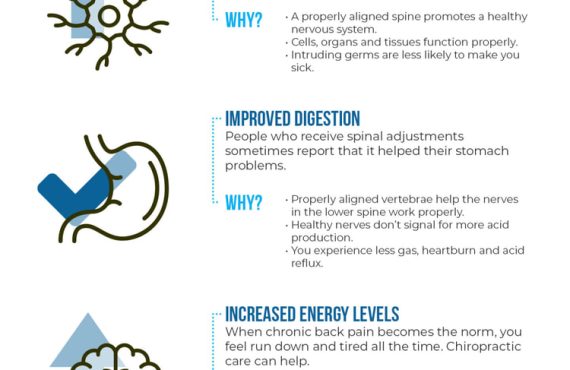Are you struggling with balance and coordination? If so, chiropractic care may be the solution you’ve been searching for. At Henry Chiropractic, owned and operated by Dr. Craig Henry, and with the expertise of Dr. Aaron Hixon, they are dedicated to improving the overall health and wellness of their patients in Pensacola and the surrounding communities. Using a variety of chiropractic techniques such as Diversified, Gonstead Spinal Manipulation, and Myofascial Release Technique, they can help alleviate back and neck pain while also enhancing balance and coordination. So, say goodbye to stumbling and feeling unsteady on your feet, and let chiropractic care provide the support you need to regain your stability and confidence.

Understanding Balance and Coordination
Balance and coordination are two essential aspects of our daily lives that we often take for granted. However, when issues arise in these areas, they can significantly impact our overall well-being and quality of life. Understanding what balance and coordination are, and their importance, is key to addressing these concerns effectively.
What is balance?
Balance refers to our ability to maintain a stable and upright position while performing various activities. It is controlled by a complex interaction between our sensory systems, including the inner ear, eyes, and proprioception (the sense of our body’s position in space). When these systems work together harmoniously, we can maintain our balance seamlessly.
What is coordination?
Coordination, on the other hand, involves the integration of various body systems to perform smooth and precise movements. It requires the cooperation of our muscles, joints, nervous system, and sensory feedback. Good coordination allows us to perform daily tasks such as walking, reaching, and grasping objects effortlessly.
The importance of balance and coordination
Balance and coordination are crucial for maintaining independence and preventing injuries. They play a vital role in our ability to walk, move, and engage in physical activities without fear of falling or stumbling. Poor balance and coordination can lead to accidents and falls, which can result in serious injuries, particularly in older adults. By prioritizing the maintenance and improvement of balance and coordination, we can enhance our overall physical functioning and quality of life.
Causes of Balance and Coordination Issues
Understanding the potential causes of balance and coordination issues is essential in order to address and treat these problems effectively. Here are some common factors that can contribute to these difficulties:
Age-related balance problems
As we age, our sensory systems gradually decline, leading to age-related balance problems. This natural aging process can affect the inner ear, vision, and proprioception, resulting in decreased balance and increased fall risks.
Inner ear disorders
The inner ear plays a significant role in our balance and spatial orientation. Disorders such as Ménière’s disease or benign paroxysmal positional vertigo (BPPV) can disrupt the function of the inner ear and cause balance issues.
Neurological conditions
Certain neurological conditions, such as Parkinson’s disease, multiple sclerosis, and stroke, can affect the coordination and balance centers in the brain. These conditions can lead to difficulties in maintaining balance and performing coordinated movements.
Musculoskeletal imbalances
Musculoskeletal imbalances, including weakness, joint stiffness, and limited range of motion, can contribute to balance and coordination problems. These imbalances can disrupt the body’s ability to move efficiently and maintain stability.
How Chiropractic Works
Chiropractic care focuses on the relationship between the spine and the nervous system to optimize overall health and well-being. Misalignments in the spine, known as subluxations, can interfere with nervous system functioning and impact various bodily functions, including balance and coordination.
The role of the spine in balance
The spine serves as the central pillar of our body, providing support and structure. It also houses and protects the spinal cord, which serves as the main pathway for communication between the brain and the body. Any misalignments or restrictions in the spine can disrupt this communication and affect our balance.
Impact of misalignments on coordination
Misalignments in the spine can also affect the coordination centers in the brain, leading to difficulties in performing precise movements. By realigning the spine and restoring proper nervous system functioning, chiropractic adjustments can help improve coordination.
Chiropractic adjustments to improve balance and coordination
Chiropractic adjustments involve gentle, targeted manipulations of the spine to correct misalignments and restore balance to the nervous system. By addressing any subluxations and optimizing nerve flow, chiropractors can help improve both balance and coordination.
Benefits of Chiropractic Care for Balance and Coordination
Chiropractic care offers numerous benefits when it comes to addressing balance and coordination issues. Here are some of the advantages that chiropractic care can provide:
Reduced pain and discomfort
Chiropractic adjustments can help alleviate pain and discomfort associated with musculoskeletal imbalances that contribute to balance and coordination issues. By reducing pain, individuals can move more freely and confidently, thus improving their balance and coordination.
Improved joint function
Chiropractic care aims to restore proper joint function by addressing restrictions and misalignments. Improved joint mobility and range of motion can contribute to better coordination and balance.
Enhanced nervous system communication
By removing subluxations and optimizing nerve flow, chiropractic adjustments improve nervous system communication. This enhanced communication allows for better coordination and balance throughout the body.
Better posture and alignment
Posture plays a crucial role in maintaining balance and coordination. Chiropractic care helps correct postural imbalances and align the spine properly, improving overall posture and consequently enhancing balance and coordination.
Increased proprioception
Proprioception, or the sense of our body’s position in space, is vital for maintaining balance and coordination. Chiropractic adjustments can improve proprioceptive feedback by optimizing communication between the nervous system and the body’s proprioceptive receptors.

Chiropractic Techniques for Balance and Coordination
Chiropractors utilize various techniques to address balance and coordination issues. Here are some common chiropractic techniques that can be used:
Diversified technique
The diversified technique is the most commonly used chiropractic technique and involves manual adjustments of the spine. It aims to restore proper alignment and joint function, improving balance and coordination.
Gonstead technique
The Gonstead technique focuses on specific adjustments targeted at individual vertebrae to correct misalignments and enhance nervous system functioning. This technique can be particularly effective in addressing balance and coordination issues.
Instrument Assisted Soft Tissue Mobilization (IASTM)
IASTM involves the use of specialized tools to apply controlled pressure to soft tissues, such as muscles and tendons. This technique can help release tension and improve mobility, contributing to better overall balance and coordination.
Myofascial Release Technique (MRT)
MRT aims to release tension and restrictions in the fascia, the connective tissue that surrounds muscles and organs. By addressing fascial restrictions, MRT can improve mobility and enhance balance and coordination.
Other effective chiropractic techniques
In addition to the techniques mentioned above, chiropractors may utilize other approaches such as Activator Method, Thompson Technique, or Applied Kinesiology to address balance and coordination issues. The specific technique used will depend on the individual’s needs and preferences.
Assessment and Treatment
When seeking chiropractic care for balance and coordination issues, a thorough assessment and examination are essential. Chiropractors will evaluate your spinal alignment, posture, range of motion, and perform neurological tests to determine the underlying causes of your concerns.
Initial assessment and examination
During the initial assessment, chiropractors will take a detailed medical history and conduct a physical examination. This evaluation helps identify any musculoskeletal imbalances, neurological factors, or other issues contributing to balance and coordination problems.
Specific chiropractic treatment plans
Based on the assessment findings, chiropractors will develop a specific treatment plan tailored to address the individual’s needs and goals. This plan may include a combination of chiropractic adjustments, exercises, stretches, and lifestyle modifications.
Collaboration with other healthcare professionals
Chiropractors recognize the importance of collaboration in providing comprehensive care. If the underlying cause of balance and coordination issues is outside the scope of chiropractic practice, such as a neurological condition, chiropractors may refer patients to other healthcare professionals for additional evaluation and treatment.
Case Studies: Chiropractic Success in Improving Balance and Coordination
Chiropractic care has proven successful in improving balance and coordination for many individuals. Here are some case studies that demonstrate the effectiveness of chiropractic interventions:
Patient case study 1: Resolving balance issues
Patient X presented with recurring balance issues and a history of falls. Through chiropractic adjustments and rehabilitative exercises, their balance significantly improved, enabling them to regain their confidence and independence.
Patient case study 2: Restoring coordination after injury
Patient Y suffered a sports-related injury that resulted in impaired coordination. With regular chiropractic care, including adjustments and soft tissue mobilization techniques, their coordination gradually improved, allowing them to return to their previous level of physical activity.
Patient case study 3: Enhancing balance in older adults
A group of older adults experiencing balance problems participated in a chiropractic care program that included adjustments, exercises, and postural rehabilitation. The program successfully improved their balance and reduced their risk of falls, significantly enhancing their overall quality of life.
Prevention and Maintenance
Prevention and maintenance are crucial aspects of managing balance and coordination issues. In addition to chiropractic care, incorporating specific strategies and practices into your routine can help prevent further concerns and maintain your progress:
Exercises and stretches for balance and coordination
Engaging in exercises and stretches that target balance and coordination can help improve these areas. Activities such as yoga, tai chi, and balance training exercises can enhance stability and coordination.
Lifestyle modifications for better balance
Making conscious lifestyle choices can also contribute to better balance and coordination. This may include maintaining a healthy diet, staying physically active, getting regular sleep, and minimizing stress levels.
Regular chiropractic maintenance for ongoing support
Once balance and coordination have been improved with chiropractic care, it is essential to maintain your progress. Regular chiropractic adjustments can help ensure optimal spinal alignment, nervous system functioning, and overall balance and coordination.
Choosing a Chiropractor for Balance and Coordination Issues
When selecting a chiropractor to address your balance and coordination issues, it is crucial to consider the following factors:
Qualifications and credentials
Ensure that the chiropractor you choose is properly licensed and has received the necessary education and training to practice chiropractic care. Look for certifications or memberships in professional organizations that uphold high standards of practice.
Experience and specialization
Consider the chiropractor’s experience and specialization in treating balance and coordination issues. A chiropractor with specific expertise in this area will have the knowledge and skills necessary to provide effective care.
Patient testimonials and reviews
Reading patient testimonials and reviews can provide valuable insights into the chiropractor’s abilities and the quality of care they provide. Look for positive experiences from patients who have sought treatment for balance and coordination issues.
Conclusion
Chiropractic care offers a holistic and effective approach to addressing balance and coordination issues. By focusing on the alignment of the spine and optimizing nervous system functioning, chiropractors can help individuals improve their balance, coordination, and overall quality of life. Whether you are experiencing age-related balance problems, inner ear disorders, neurological conditions, or musculoskeletal imbalances, chiropractic care can provide personalized treatment and support to help you take control of your balance and coordination. Seek the expertise of a qualified chiropractor, such as Dr. Craig Henry or Dr. Aaron Hixon at Henry Chiropractic in Pensacola, Florida, to start your journey towards improved balance and coordination today.



































































